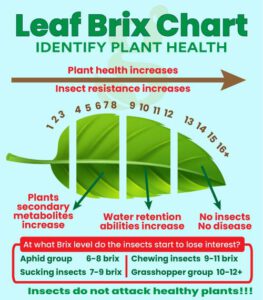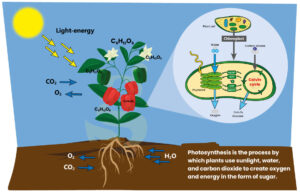
Brix in relation to crop health and quality
Brix in relatie tot gezondheid en kwaliteit van gewassen. De zoete wetenschap van Brix. Brix in relatie tot gezondheid en kwaliteit van gewassen. Brix-waarde verwijst
More yield from better quality
All in just 5 products
25+ years of fertilizer experience
Better and cheaper
Easy to use
The history of hydroponics is a story of innovation and perseverance, rooted in humanity's quest to redefine the boundaries of traditional agriculture. From ancient civilisations to modern scientific breakthroughs, the journey of hydroponics has changed the way we grow plants. This article dives into the period of hydroponics throughout history. It examines the pioneers who paved the way and the inventors responsible for creating hydroponic fertilisers, marking a crucial chapter in the evolution of growing crops.
The concept of hydroponics dates back to ancient times, with early civilisations experimenting with cultivation methods without soil. The hanging gardens of Babylon, one of the Seven Wonders of the Ancient World, are often cited as an early example of hydroponics. Although the exact mechanisms remain unclear, historians believe the gardens used a form of water transport to nurture plants without traditional soil.

In ancient China, the floating gardens of the Wangcheng Palace demonstrated another form of hydroponics. Plants were suspended in water rich in nutrients, allowing the roots to absorb essential elements directly. These early attempts with hydroponics laid the foundation for future innovations, although it would take centuries for the true potential of this farming method to unfold.
The modern era of hydroponics began to take shape in the early 17th century when Sir Francis Bacon, an English philosopher and scientist, conducted experiments on growing without soil. While his work focused on the principles of fertilisers, it laid the foundation for future developments in hydroponics.
In the late 19th century, Julius H. Sachs (1832-1897), a German botanist, made important contributions to the understanding of fertilisers. Sachs conducted experiments with nutrient solutions and investigated the specific elements needed for plant growth. His work laid the foundation for the formulation of hydroponic fertilisers by identifying the essential elements needed for healthy plant development.
Sir Albert Howard (1873-1947), a British botanist and the father of modern organic farming, conducted pioneering research on soil health and fertilisers. Although Howard focused mainly on organic farming, his insights into the importance of balanced nutrition for plant growth influenced the development of fertilisers for hydroponics. Howard's emphasis on sustainability and ecological farming principles left an indelible mark on the evolution of fertilisers.
In 1929, Dr W.F. Gericke (1882 - 1970), a professor at the University of California, coined the term "hydroponics" and conducted pioneering research into growing plants without soil. Gericke's experiments used sawdust as a growing medium. To this, he added a nutrient solution, demonstrating that plants could thrive without traditional soil.
As hydroponics gained popularity, the need for specialised nutrients became apparent. Traditional soil contains a diverse range of minerals and nutrients, and replicating this balance in a soilless environment required the development of hydroponic fertilisers. The inventors of these fertilisers played a crucial role in the course and continued success of hydroponics.
The most notable contribution of Dr Hoagland (1884-1949) is the formulation of the Hoagland solution. In the 1930s, Hoagland conducted extensive research to understand the nutritional needs of plants. He developed an accurate and standardised nutrient solution that could support optimal plant growth in the absence of soil. This nutrient solution, known as the Hoagland solution, became a landmark in hydroponics and plant physiology. Hoagland's contributions continue to live on in contemporary agriculture and plant science. The Hoagland solution remains a standard reference for hydroponic researchers, educators and growers, underscoring the lasting impact of Dennis R. Hoagland's pioneering work in fertilisers.
Hoagland's work significantly improved our understanding of plant physiology, especially in terms of how plants absorb and use nutrients. His contributions laid the foundation for later research on fertilisers and became a reference point for scientists and growers. Although Dr Hoagland was a key figure in the development of hydroponic solutions, it is essential to acknowledge the collaboration with Dr Arnon. Arnon's expertise in plant physiology and biochemistry complemented Hoagland's work, leading to a comprehensive understanding of fertilisers.
The mid-20th century saw the Green Revolution, a period of rapid advances in agricultural practices aimed at increasing global food production. Driven by famine during World War II and the increase in world population.
As we have entered the 21st century, hydroponics has become a common cultivation method embraced by commercial growers, researchers and home growers. The continuing evolution of hydroponic fertilisers reflects ongoing efforts to optimise plant nutrition and maximise crop yields sustainably. In recent years, there has been mainly development in the application of bio-stimulants. Progress is being made mainly in the areas of quality and sustainability. In the area of yield maximisation, we have pretty much reached the limit, especially if we exclude the use of undesirable and often banned chemical hormones (PGRs). Claims such as 20% to 30% higher yields are therefore pure nonsense.
Nonsense claims that cannot be achieved

Brix in relatie tot gezondheid en kwaliteit van gewassen. De zoete wetenschap van Brix. Brix in relatie tot gezondheid en kwaliteit van gewassen. Brix-waarde verwijst

Het endocannabinoïde systeem begrijpen Een korte handleiding voor CB1- en CB2-receptoren Het endocannabinoïde systeem (ECS) speelt een fundamentele rol bij het reguleren van verschillende fysiologische

Photosynthesis Photosynthesis is the process by which green plants, algae and some bacteria convert light energy into energy in the form of glucose. This process mainly takes place

7 handy tips to prepare for the new garden season Gardening tasks when the spring jitters strike: Spring is a time of renewal and

Creating a successful indoor grow involves more than just light and water. Here are 7 tips to boost your indoor garden.

Transforming urban heat islands into cool and livable cities The power of harnessing greenery for cooler cities As urbanisation increases, cities are struggling over
Brix in relatie tot gezondheid en kwaliteit van gewassen. De zoete wetenschap van Brix. Brix in relatie tot gezondheid en kwaliteit van gewassen. Brix-waarde verwijst
Het endocannabinoïde systeem begrijpen Een korte handleiding voor CB1- en CB2-receptoren Het endocannabinoïde systeem (ECS) speelt een fundamentele rol bij het reguleren van verschillende fysiologische
Photosynthesis Photosynthesis is the process by which green plants, algae and some bacteria convert light energy into energy in the form of glucose. This process mainly takes place
7 handy tips to prepare for the new garden season Gardening tasks when the spring jitters strike: Spring is a time of renewal and
The development of hydroponic fertilisers through the ages The history of hydroponics is a story of innovation and perseverance, rooted in the quest of the
Creating a successful indoor grow involves more than just light and water. Here are 7 tips to boost your indoor garden.
Home » The development of hydroponic fertilisers through the ages

Because growing your own is a craft. It takes time, energy, focus, attention, maybe even love. At your own pace, in your own environment. You are the creator.